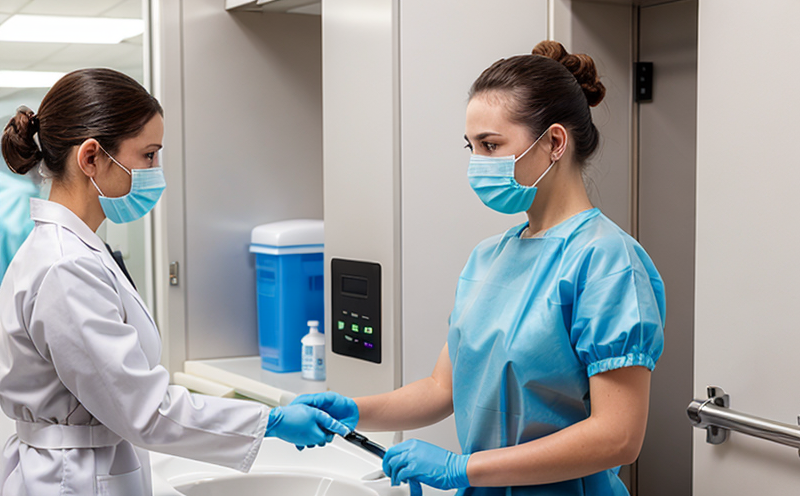DIN 53931 Antibacterial activity testing of technical textiles
The DIN 53931 standard is a pivotal method used to evaluate the antibacterial properties of technical textiles. This procedure is particularly valuable for industries where hygiene and sanitation are critical, such as healthcare, medical devices, home textiles, and personal protective equipment (PPE). The test assesses whether the textile material can inhibit bacterial growth effectively under specified conditions.
The protocol outlined in DIN 53931 involves placing a sample of the technical textile into a medium containing bacteria. After incubation, the extent to which bacterial growth is inhibited or prevented from occurring is measured. This standard is recognized for its reliability and reproducibility across different laboratories, ensuring consistent results.
The process begins with selecting an appropriate specimen size, typically a square piece of material measuring 10 cm x 10 cm. The sample must be prepared carefully to ensure that it represents the properties of the entire batch or lot from which it is taken. Once prepared, the textile sample is placed into a standard agar-based medium containing the target bacteria.
The most commonly used bacterial strains in this testing are Escherichia coli (E.coli) and Saccharomyces cerevisiae. These organisms are chosen for their widespread presence on human skin, making them a relevant indicator of real-world conditions. After inoculation, the samples are incubated at 37°C for four hours, after which they are examined visually to assess any visible bacterial growth.
Following this initial step, further analysis may involve quantitative methods such as colony-forming unit (CFU) counts or optical density measurements using a spectrophotometer. These techniques provide more precise data on the extent of bacterial inhibition compared to visual inspection alone.
The acceptance criteria for DIN 53931 testing are stringent and ensure high standards in hygiene performance. For instance, if no visible growth is observed within the specified time frame, it indicates successful antibacterial activity. Quantitative results must meet predefined thresholds set by regulatory bodies or company specifications to pass this test.
This method not only helps manufacturers comply with international regulations but also enhances product quality and reputation among consumers concerned about hygiene and health safety. By adhering to DIN 53931 standards, companies can demonstrate their commitment to producing safe and effective products, thereby gaining competitive advantages in the market.
Benefits
- Ensures compliance with international standards for antimicrobial performance.
- Promotes the development of high-quality products that meet customer expectations.
- Enhances brand reputation through transparent and verifiable testing processes.
- Aids in regulatory approval by demonstrating adherence to stringent industry criteria.
- Improves product reliability, reducing recalls and associated costs.
- Supports continuous improvement efforts within the manufacturing process.
Industry Applications
The DIN 53931 antibacterial activity testing is particularly beneficial for industries where hygiene and sanitation are paramount. Key sectors include:
- Healthcare: Medical garments, surgical gowns, and bedding.
- Medical Devices: Implants, dressings, and catheters.
- Home Textiles: Bedding, towels, and other fabrics used in domestic settings.
- Personal Protective Equipment (PPE): Masks, gloves, and coveralls designed for protection against pathogens.
In each of these industries, ensuring that products meet stringent antibacterial standards is crucial. DIN 53931 provides a reliable method to achieve this goal, helping manufacturers produce safer and more effective products.
Customer Impact and Satisfaction
Customers in the sectors mentioned above place significant value on hygiene and safety features of the products they purchase. By offering DIN 53931-compliant products, companies can significantly enhance customer satisfaction by delivering items that meet or exceed these expectations.
The test results not only provide peace of mind for consumers but also encourage them to choose brands they trust. This leads to increased loyalty and repeat purchases, contributing positively to a company's bottom line. Additionally, passing such rigorous tests can open up new market opportunities in regions with strict hygiene regulations.





